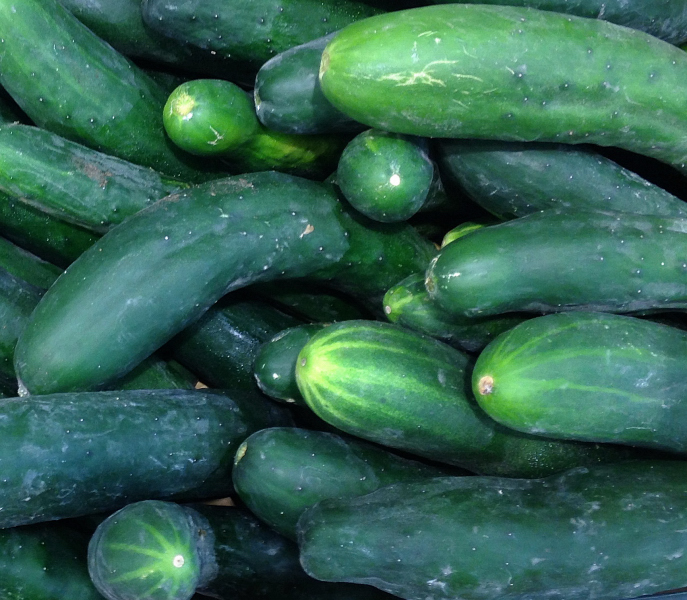| "Descrizione" by Street82 (2970 pt) | 2024-Aug-28 18:38 |
Review Consensus: 10 Rating: 10 Number of users: 1
| Evaluation | N. Experts | Evaluation | N. Experts |
|---|---|---|---|
| 1 | 6 | ||
| 2 | 7 | ||
| 3 | 8 | ||
| 4 | 9 | ||
| 5 | 10 |
Cucumis Sativus Fruit Water is a hydrosol obtained from the fruit of the cucumber (Cucumis sativus). It is used in cosmetic and skincare products for its refreshing, hydrating, and soothing properties. This water is valued for its ability to hydrate the skin and provide a calming effect.
Chemical Composition and Structure:
Cucumis Sativus Fruit Water contains:
- Vitamins: Includes vitamins such as vitamin C and vitamin K, which are beneficial for skin health and repair.
- Minerals: Rich in minerals like potassium, magnesium, and calcium that support skin hydration and overall vitality.
- Cucurbitacins: Compounds with anti-inflammatory and antioxidant properties that help reduce skin irritation and redness.
- Polysaccharides: Carbohydrates that provide hydration and form a protective barrier on the skin.
- Amino Acids: Essential amino acids present in trace amounts that contribute to skin conditioning.
The chemical structure of Cucumis Sativus Fruit Water consists of a variety of dissolved compounds that contribute to its hydrating and soothing effects on the skin.
It consists of:
- water 95%
- carbohydrates 3.6%
- protein 0.65%
nutraceuticals (1):
- Vitamin C 8mg/100g
- Vitamin E 0.16mg/100g
- Retinol 28ug/100g
- Vitamin B9 15ug/100g
- Flavonoids
Physical Properties:
Cucumis Sativus Fruit Water is typically a clear, pale green or colorless liquid with a fresh, cucumber-like scent. It is highly soluble in water and has a high water content, making it effective for hydration.
Production Process:
- Harvesting: Cucumbers are harvested, and the fruit is prepared for extraction.
- Preparation: The cucumbers are washed and processed.
- Distillation: The fruit is subjected to a distillation process to extract the hydrosol.
- Purification: The cucumber water is purified to remove impurities and concentrate beneficial components.
- Formulation: The purified Cucumis Sativus Fruit Water is incorporated into various cosmetic and skincare products.
Applications:
- Cosmetics: Used in skincare products such as toners, mists, and moisturizers for its hydrating, soothing, and refreshing properties. Cucumis Sativus Fruit Water helps to calm the skin, provide moisture, and improve overall skin texture.
- Eye Care Products: Included in eye creams and gels to reduce puffiness and dark circles due to its cooling and soothing effects.
- Hair Care: Utilized in hair mists and conditioning treatments for its hydrating and refreshing benefits.
Environmental and Safety Considerations:
- Environmental Impact: The production of Cucumis Sativus Fruit Water should follow sustainable practices, including efficient use of resources and waste management to minimize environmental impact.
- Safety: Generally considered safe for topical use in recommended concentrations. Safety assessments should be performed to ensure the water’s efficacy and to prevent any potential allergic reactions or adverse effects.
INCI Functions:

What it is used for and where
Medical
This study attributes to cucumber the effectiveness of reducing pain in moderate osteoarthritis (2).
Traditional medical medicine used it to treat hyperlipidaemia, constipation and headaches. It has anti-inflammatory and antioxidant properties (3) that prevent the potential decline of the mitochondrial membrane in hepatocytes and the fruit juice of this plant is used as an emollient in anti-acne lotions. It has been studied in some animal models where anti-hyperglycaemic effects (which are the main cause of diabetes complications). were observed (4).
Cosmetics
Skin conditioning agent - Miscellaneous. This ingredient has the task of modifying the condition of the skin when it is damaged or dry by reducing its flakiness and restoring its elasticity.
The aqueous extract of the cucumber has proven refreshing properties that soothe irritated skin and reduce any swelling (5).
For more information:
CAS 89998-01-6
References_________________________________________________________________________
(1) Alsadon A., Al-Helal I., Ibrahim A., Abdel-Ghany A., Al-Zaharani S., Ashour The effects of plastic greenhouse covering on cucumber (Cucumis sativus L.) growth. T. Ecol. Eng. 2016;87:305–312. doi: 10.1016/j.ecoleng.2015.12.005.
(2) Nash RJ, Azantsa BK, Sharp H, Shanmugham Effectiveness of Cucumis sativus extract versus glucosamine-chondroitin in the management of moderate osteoarthritis: a randomized controlled trial. V. Clin Interv Aging. 2018 Oct 25;13:2119-2126. doi: 10.2147/CIA.S173227.
(3) Mukherjee PK, Nema NK, Maity N, Sarkar BK. Phytochemical and therapeutic potential of cucumber. Fitoterapia. 2013 Jan;84:227-36. doi: 10.1016/j.fitote.2012.10.003.
(4) Chandrasekar B, Mukherjee B, Mukherjee SK. Blood sugar lowering potentiality of selected Cucurbitaceae plants of Indian origin. Indian J Med Res. 1989 Aug;90:300-5.
(5) Kumar D, Kumar S, Singh J, Narender, Rashmi, Vashistha B, Singh N. Free Radical Scavenging and Analgesic Activities of Cucumis sativus L. Fruit Extract. J Young Pharm. 2010 Oct;2(4):365-8. doi: 10.4103/0975-1483.71627.
| Evaluate |

